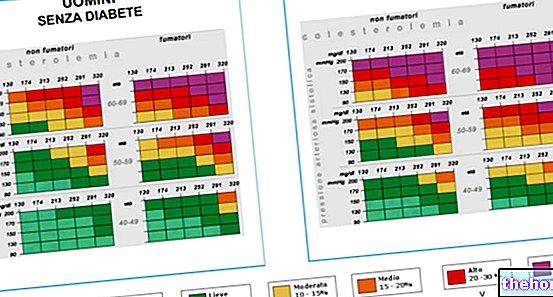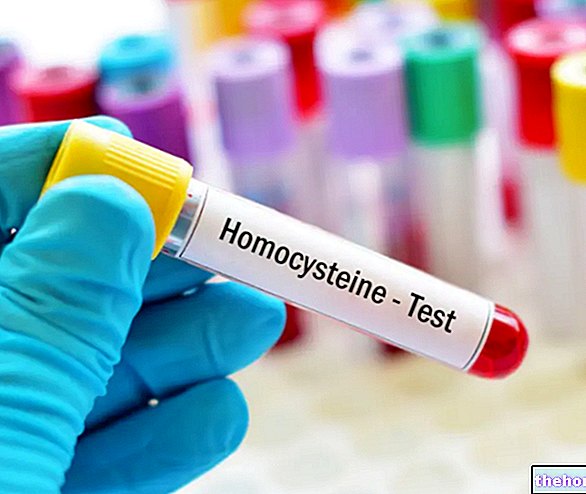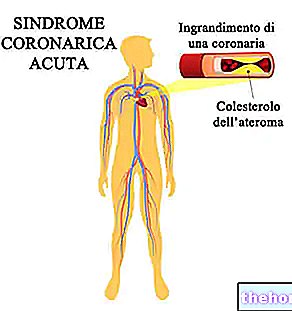Definition
Thrombophlebitis is the term used to indicate the inflammation of the wall of a vein caused by the formation of a blood clot, ie the formation of a thrombus.
Thrombophlebitis can affect the superficial veins (we therefore speak of superficial thrombophlebitis, nowadays simply called "thrombophlebitis"), or it can involve the deep veins (in this case we speak of deep vein thrombosis).
Causes
There are several causes that can contribute to the development of thrombophlebitis. Among these we remember:
- the reduction in the speed of blood flow inside the veins;
- injuries to the venous walls, which can be caused by trauma, infection, intravenous catheters or needles;
- the injection of anticancer drugs or irritants;
- changes in blood clotting;
- pregnancy and varicose veins.
Symptoms
Symptoms that may occur in patients with thrombophlebitis are pain and stiffness on palpation of the vein affected by the inflammation, localized edema, swelling, redness and inflammation of the skin.
In some cases, moreover, superficial thrombophlebitis can become complicated in deep vein thrombosis.
Following the detachment of a thrombus fragment (which thus gives rise to an embolus), however, serious complications could arise, such as stroke, myocardial infarction and pulmonary embolism.
The information on Thrombophlebitis - Drugs for the Treatment of Thrombophlebitis is not intended to replace the direct relationship between health professional and patient. Always consult your doctor and / or specialist before taking Thrombophlebitis - Drugs to Treat Thrombophlebitis.
Medicines
Superficial thrombophlebitis can sometimes resolve itself within a couple of weeks without the need for medication. Unfortunately, this is not always the case.
To treat superficial thrombophlebitis, therefore, the doctor may decide to prescribe creams based on natural substances (such as, for example, rutin, asiaticoside and hesperidin, etc.), with vasoprotective and anti-inflammatory activity. To help promote healing, when possible, he may also recommend the use of appropriate elastic supports.
Furthermore, if he deems it necessary, the doctor may decide to undertake a drug therapy based on the administration of anti-inflammatory drugs and possibly heparin, in order to reduce inflammation, edema and the risk of thrombophlebitis evolving into deep vein thrombosis. .
As for the treatment of deep vein thrombosis, however, please refer to the "dedicated article:" Drugs for the Treatment of Deep Vein Thrombosis ".

The following are the classes of drugs most used in the therapy against superficial thrombophlebitis and some examples of pharmacological specialties; it is up to the doctor to choose the active ingredient and dosage most suitable for the patient, based on the severity of the disease, the state of health of the patient and his response to treatment.
NSAIDs
Non-steroidal anti-inflammatory drugs can be used in the treatment of superficial thrombophlebitis by virtue of their anti-inflammatory and analgesic properties.
Among the various active ingredients that can be used, we mention ibuprofen (Brufen ®, Moment ®, Nurofen ®, Arfen ®, Actigrip fever and pain ®, Vicks fever and pain ®).
Ibuprofen is available in various pharmaceutical formulations suitable for different routes of administration (oral, parenteral, rectal). When administered orally, the dose used should not exceed 1,200-1,800 mg of active ingredient per day.
The exact quantity of drug to be taken must therefore be established by the doctor on an individual basis for each patient, in order to identify the dosage schedule that is best suited to each individual case.
Heparin
Heparin is an anticoagulant drug capable of preventing the formation of thrombus. To be precise, in truth, it is good to specify that the term heparin does not mean a single active ingredient, but rather indicates a family of mucopolysaccharides capable of inhibit blood clotting.
In fact, we can distinguish "standard heparin (otherwise called" unfractionated "and, often, simply called" heparin ") and low molecular weight heparins. This last category of heparins is used both in the treatment of thrombophlebitis and for preventive to prevent this from becoming complicated in deep vein thrombosis.
Compared to unfractionated heparin, low molecular weight heparins have a longer duration of action.
Among the different types of low molecular weight heparins that can be used, we remember:
- Bemiparin (Ivor ®): when used in the treatment of thrombophlebitis, the dose of bemiparin to be administered varies according to the age and body weight of the patients. For example, when used in adult patients aged between 18 and 64 years and having a body weight between 50 and 70 kg, the dose of drug usually administered is 7,500 IU per day.
When used to prevent the onset of deep vein thrombosis, however, the dose of bemiparin used is 2,500-3,500 IU.
However, the doctor will decide, on a case-by-case basis, how much bemiparin to use and for how long to administer it. - Enoxaparin (Clexane ®): enoxaparin can be used in the treatment of superficial thrombophlebitis to prevent it from becoming complicated in deep vein thrombosis.
In this case, enoxaparin is usually administered subcutaneously at a dose of 2,000 I.U. per day. If necessary, the doctor may decide to increase the dose of enoxaparin used. - Dalteparin (Fragmin ®): dalteparin can also be used to prevent the complication of thrombophlebitis in deep vein thrombosis. The drug dose usually used is 2,500-5,000 IU, to be administered subcutaneously. The exact dose of dalteparin to be used in each patient will have to be determined by the physician.




























